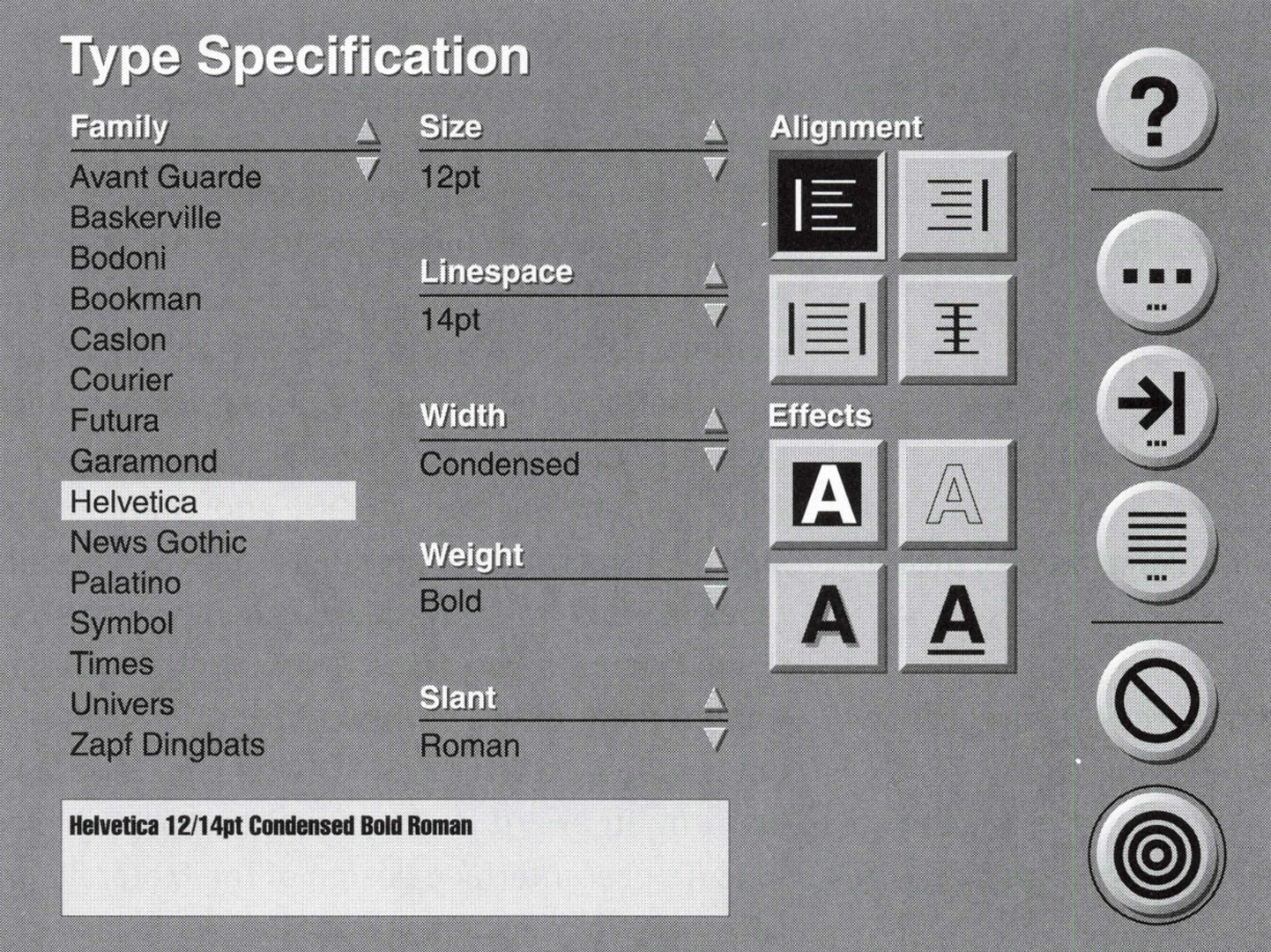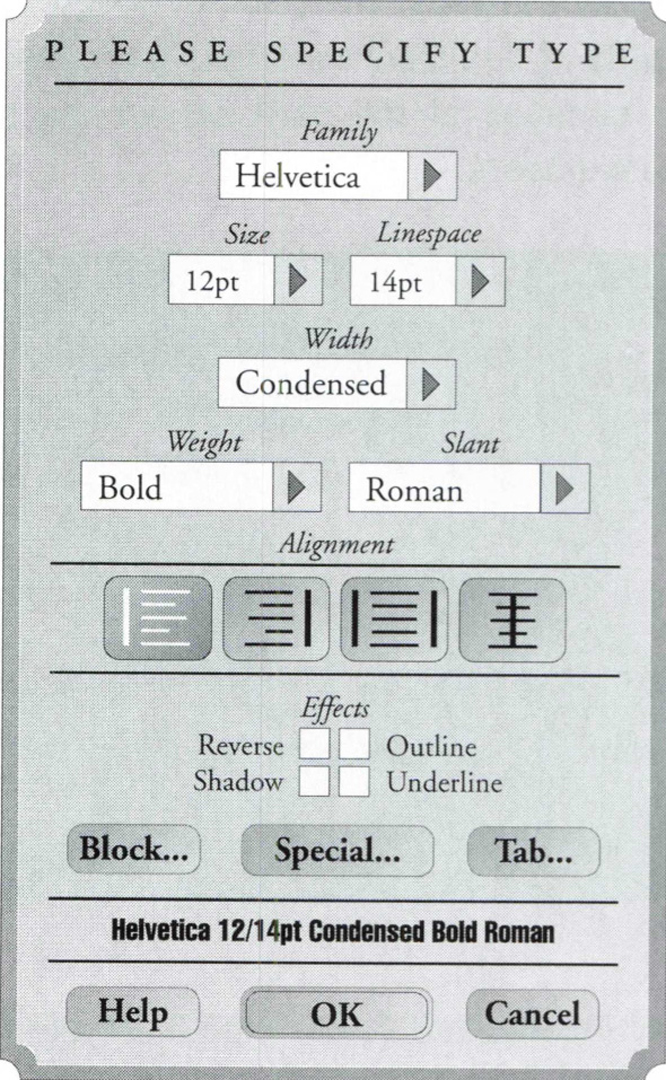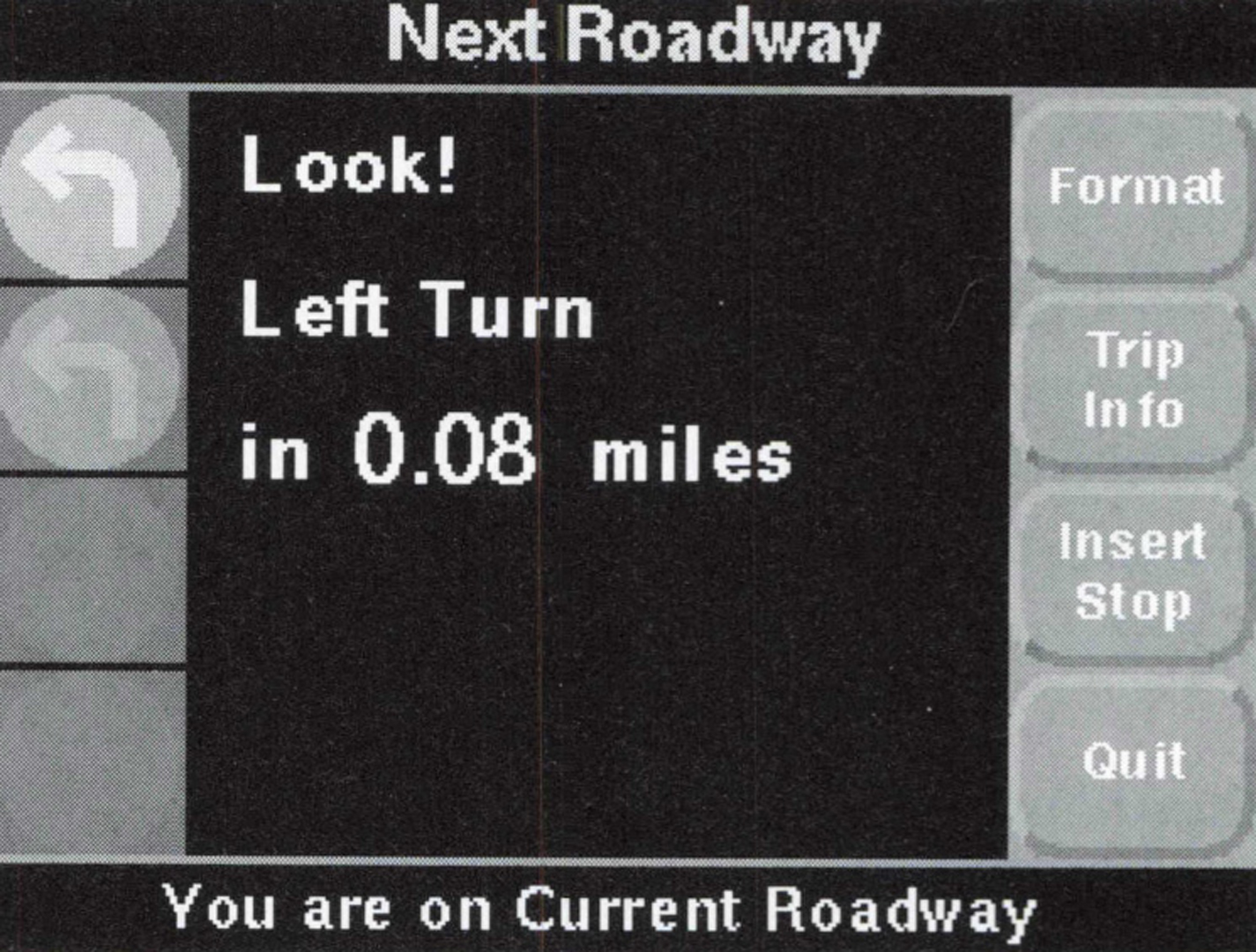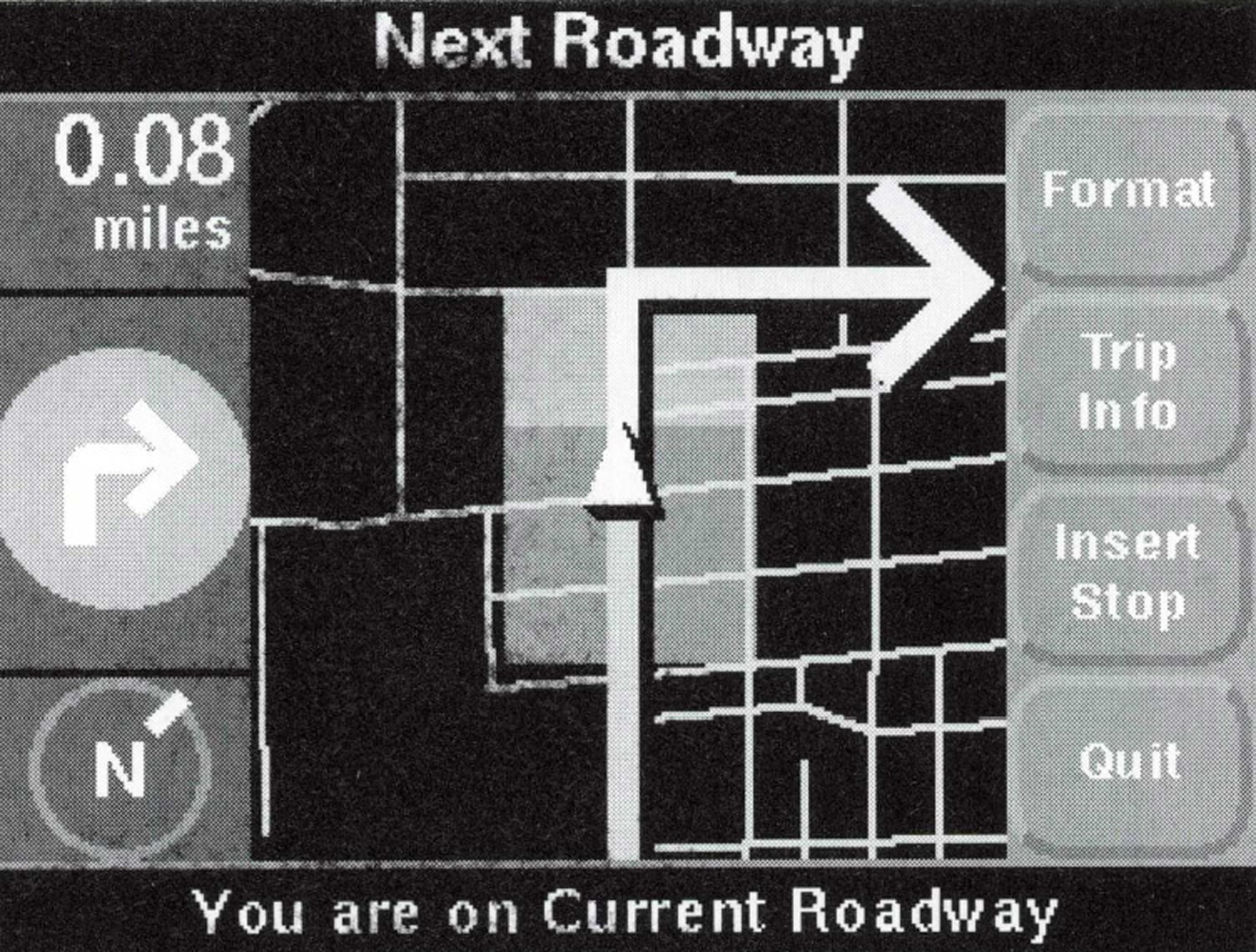“The Design Process for Information Products” by Marcus
Notice: Pod Template PHP code has been deprecated, please use WP Templates instead of embedding PHP. has been deprecated since Pods version 2.3 with no alternative available. in /data/siggraph/websites/history/wp-content/plugins/pods/includes/general.php on line 518
Conference:
- SIGGRAPH 1993
-
More from SIGGRAPH 1993:
Notice: Array to string conversion in /data/siggraph/websites/history/wp-content/plugins/siggraph-archive-plugin/src/next_previous/source.php on line 345

Notice: Array to string conversion in /data/siggraph/websites/history/wp-content/plugins/siggraph-archive-plugin/src/next_previous/source.php on line 345

Type(s):
Entry Number: 19
Title:
- The Design Process for Information Products
Program Title:
- Designing Technology
Presenter(s):
Project Affiliation:
- Aaron Marcus and Associates
Description:
- Metaphors: fundamental terms, images, and concepts.
- Mental Model: essential organization of data, functions, tasks, and roles embodied in word lists and abstract screens.
- Navigation: movement through the model via menus, windows, dialogue boxes, and control panels.
- Look: appearance characteristics, including detailed specifications for typography, color, symbols, animation, sequencing, acoustic cues, and the design of specific tables, charts, maps, diagrams, and illustrations. These may or may not be required to comply with the constraints of commercial graphical user interfaces (GU ls).
- Feel: interaction techniques, including detailed specifications for selection, tradeoff of input styles, and characteristics of output devices.
- Fluency with information-oriented, systematic graphic design tasks, such as systems analysis, programmatic design, grid development, design of pictogram/ ideogram sets, and chart/map/diagram design.
Intermediate or expert-level fluency with graphics editing, word processing, and multimedia editing applications. - Ability to explain design decisions cogently and to write descriptions, explanations, and specifications of work, not just shape the images, select the colors, etc.
- Comfort with technical terms and concepts, ability to meet software engineers and content experts halfway. The more we can speak the clients’ and/or the customers’ language, the better chance we have to be selected to assist them and to be able to analyze their needs effectively.
- Software engineers program prototypes using graphical user interface (GUI) building tools.
- Human factors specialists evaluate prototypes and conduct usability tests.
- Technical writers complete and refine the documents describing and explaining the product, presentation, or project.
The Nature of Design
In the computer world, “design” means many things. Hardware engineers think of themselves as designers. Software engineers, or programmers, call themselves designers and speak of their work as designs. Some human factors specialists think of themselves as designers. Even cognitive scientists sometimes call their work “design.”
In our business, which includes user interface design, electronic document design, and interactive multimedia design, design means information-oriented, systematic, industrial graphic design. A graphic designer is a master applied visual semiotics, a skilled professional who can communicate wisdom about structures and processes, as well as emotional values, effectively through visible language. The designer the chief analyst and synthesizer of metaphors, mental models, navigation, look, and feel in computer-based products that provide users with information about the world or about the product, whether they are used as a professional tools or entertainment. Design is part science, part art, with a good bit of business skill and ethical sensitivity thrown in.
Collaborative Design Teams
The designer of information-intensive products must be a team player. Real-world projects demand that the designer work amiably and process information productively with other disciplines. In our user interface design projects, for example, we almost always work as consultants or designers with professionals from these and other disciplines: software engineering, product marketing, hardware engineering, industrial design, human factors, cognitive science, anthropology, technical writing, and content experts. If we work as consultants, we evaluate existing requirements or specifications documents, prototypes, user interface design manuals, usability testing materials, existing products, users, or the client’s design process. Our deliverables are primarily videotaped discussions and reports. If we work as designers, we determine precise, accurate, concise versions of metaphors, mental models, navigation, look, and feel. These components can be defined as the following:
As designers, not consultants, we deliver pixels on disks, or files with scripts that embody the actual components of the working user interfaces, documents, presentations, or multimedia displays, as well as design-specification documents.
Design Skills for Cross-disciplinary Development Teams
To work effectively with interdisciplinary product development teams, designers need to be able to draw, think, write, and talk. Specifically, they come with the following skills:
The Design Process
Although every design project is unique in its origins and process, the general procedure we find across most vertical markets is the following:
Marketing specialists gather competitive information and customer needs.
Marketing and engineering specialists prepare documents on requirements and functional specifications.
Based on available information, graphic designers specializing in user interface design prepare initially brief, then detailed, simulations of primary screens (and associated hardware) depicting essential components of metaphors, metal models, navigation, look, and feel, and then prepare initial documents describing guidelines or specifications.
An important challenge for designers is to convince product development groups that the functional requirements and specification documents, and the workflow and task specification documents, while both important, do not necessarily constitute a mental model of the product embodied in the visible appearance of and interaction with the product.
For example, in user interfaces, the functional requirements and the task sequences may be described in terms that do not mention specific menu structures and dialogue box contents. The challenge for the user interface designer is to construct a simulation or initial prototype that merges the requirements expressed in both the builder’s view and the user’s view of what is needed. After simulations and prototypes emerge, they can be evaluated by builders and users, with the final product continuing to evolve and change over a sequence of prototyping. Today’s tools allow this cyclic evolution of design. In effect, the product design is never done; when the time runs out, the best version thus far is shipped.
Product Development Team Structure
Ideally, a development group would use designers side-by-side with engineers, human factors specialists, and representatives of other disciplines, whether for a research laboratory or product development department. Typically, neither engineers or human factors specialists have sufficient background or skill in both inventing and refining metaphors, mental models, navigation, look, and feel. Many of the research projects become limited to incremental leaps because the input of experienced designers of graphics and interaction is lacking. Likewise in development groups, the pace of progress and the quality of decision-making is unnecessarily limited because of the skill set among traditional developers.
When we work with our clients, we ask them if they want evolutionary or revolutionary solutions. Revolutionary ones may be more difficult or even impossible to implement given current building/production tools. Naturally, the product development groups often opt for the evolutionary approaches; they have deadlines to meet, or are already behind. Having worked with both, there does not seem to be a great difference between the kinds of fundamental needs of the research laboratory as opposed to a product development department. It is a matter of the distance in time and breadth of conceptual horizons, which may or may not translate to budgets and available people.
Project Initiation
We find that user interface development projects may be driven by either marketing or engineering staff acting as product managers. Product managers or someone on their staffs usually are aware that they lack certain expertise, but sometimes they aren’t aware of what specialized expertise they need or where to go for help. Sometimes they are behind in their schedules because their staff has spent too much time haggling about design issues with product without resolving them, resulting in “analysis paralysis” as a systems-analysis consultant recently called the phenomenon. Many user interface projects are still driven predominantly by engineering. They often lack sufficient marketing information about typical user needs, desires, and habits.
In our document design projects, marketing managers almost invariably initiate and drive the
projects. They usually have a much better understanding of and commitment to usability testing. Our interactive multimedia projects are usually much more sensitive to market conditions, also. Software engineers are viewed as one of many valuable contributors to the success of product development.
For the past ten years, I have been advising my tutorial classes that designers should be called in at the earliest possible moment, even for strategic planning and product definition phases. Our actual arrival time varies greatly.
In a current consumer product development, we are being called in to help our client communicate advanced, novel functionality through the metaphors, mental model, navigation, look, and feel of an advanced personal communication product. Although the client already has commissioned detailed industrial design of the product’s case, the actual functioning of the with product as a communication device is still being determined! In an unusual turn of events, we have been asked to write and illustrate a draft user’s manual in order to envision the final product, then our client will implement a prototype based on the user’s manual, exactly the opposite of what usually happens.
Programmers and the Development Process
Since programmers are often in the driver’s seat, they are usually called in either before or just after marketing personnel get involved. Only in rare cases are they called in late in the process. Programmers and marketers need to understand better the value of designers in preparing rapid simulations (i.e., smart fakes) of products by whatever means available so that they can be quickly evaluated by potential users. These simulations may not be scripted prototypes. Often today’s prototyping tools are Iimited in what they can do. The evaluations of the simulations can be used as a basis for adjusting assumptions about metaphors, mental model, navigation, look, or feel in later working prototypes and the alpha and beta versions of the products. As products respond to cultural diversity in the market place, this kind of approach will be increasingly necessary.
Users and the Development Process?
Shockingly, in some of our projects, our clients never do call in users. That isn’t necessarily a recipe for a disaster if professional graphic designers are involved in the development process: for most of my professional life, I’ve understood ourselves to serve as stand-ins for the users. Increasingly, however, we work as designers to prepare prototypes that are then evaluated by users. We have also prepared questionnaires to better help our clients assess user response in focus groups during preliminary, alpha-, or beta-phase product development phases.
Development Process Results
In some cases, the development process has worked extremely well. Because of unusual circumstances for a project we did with ARPA’s software-visualization project, we had the opportunity to work with users during three years of prototype development. Our research colleagues were not only researchers and builders of prototypes, but typical users, as well. We were an ideal, efficient team. When we finally came to test our recommended conventions through independent human factors evaluation, we were pleased to learn that novice programmers improved their comprehension of code by 20 % simply from the way we had designed the typography and layout. In many other situations, the development process does not work so welI. One of the most frequent sources of frustration is that our clients will ask us to design simulations, prototypes, or templates, then implement some distorted or incomplete version of what we recommended, and we never have an opportunity to review the implementation before it is shipped. Our more sophisticated clients recognize the procedural problem, but sometimes budget limitations prevent even the most fortunate of them from undertaking the appropriate steps.
How others View Design
I recall in 1980 that an artificial intelligence researcher once came out of her research lab cubicle exclaiming in amazement that she had just learned about the existence of typographers. “Imagine,” she said, “there are people who just sit and design letters all day!” About that same time, another computer graphics researcher asked me what I thought about style in computer graphics. I thought she meant the difference between, say Bauhaus style and Art Nouveau. “No,” she explained, “I mean the difference between dotted lines and dashed lines.”
Software engineers, hardware engineers, cognitive scientists, and some marketing managers have sometimes viewed our work as cosmetic improvement, last-minute band-aids to cover up original or earlier mistakes. The involvement of designers currently may be an unplanned expense and delay in schedule. However, clients are gradually recognizing the payoff of involving designers.
Designers can plan, analyze, design, document, evaluate, and train in the areas of user interfaces, documents, and interactive multimedia. Some- times they may have to emphasize only icon design, brochure design, or other look-and-feel activities just to be able to get a foot in the door and to convince clients that their assistance goes much deeper than the surface cosmetic beauty of our charts, icons, maps, and diagrams.
For approximately half a century, the computer has been thought of as a data processing device. Recent technology developments are changing the public’s perception of the computer: the use of graphical user interfaces, the incorporation of CD-ROMs, the use of multimedia, and the combination of traditional computation functions with communication functions of electronic devices like the telephone, fax, television, cable, pagers, and radio are challenging our expectations.
Today, the computer is moving from the business-office desktop work-device for clerical, manager, or engineer staff into hand-held consumer communication devices. The nature of many traditional electronic products is beginning to blur as telephones acquire display screens, television become two-way, interactive communication terminals, and computers acquire telephone and video capabilities. Companies are re-aligning themselves to bring to market devices called personal digital assistants, personal information products, and more.
Tomorrow, that is, within this decade, the international marketplace will be flooded with information-related products competing to provide users with large amounts of data and sophisticated new functions. Much of this data and many of these functions may never have been available to the average consumer, or the configuration of traditional data and functions may be novel and unfamiliar. What impact does this have on the average consumer?
User interfaces, electronic documents, and interactive multimedia, no matter how sophisticated technologically, do not solve the essential task of communicating an information product’s data and functions. Designers must be involved to direct a high-quality, integrated approach to analyzing and designing the underlying concepts, organization, navigation, presentation, and interaction. Principles from systematic, information-oriented design can provide guidance for simple, clear, consistent solutions that will continue to benefit increasingly diverse products for an increasingly diverse international user community.
What is the role of the designer in bringing these products to market? The industry has matured. Graphic designers now sit side-by-side with programmers to develop cooperatively the information products of the next generation. Information-oriented, systematic graphic design has come a long way since the late 1960s when designers first became involved with computers.
Biography
Aaron Marcus is President of Aaron Marcus and Associates, Inc. (AM&A), an Emeryville, CA design, consulting, and product development firm that researches, designs, and consults on metaphors, semiotics, and visible languages for user interfaces, multimedia documents, and knowledge visualization. He has worked on and written about user interface design for 25 years. Marcus has given tutorials about effective communication in computer graphics at most major design and computer conferences and at corporate sites since 1971 and is the author or coauthor of several books, including Human Factors and Typography for More Readable Programs (with Ronald Baecker, 1990) and Graphic Design for Electronic Documents and User Interfaces (1992). In 1992, Marcus received the National Computer Graphics Association’s Industry Achievement Award for his contributions to computer graphics. In 1993, ID Magazine awarded his firm an award in its annual competition for AM&A’s user interface design of the Motorola in-car navigation device. Aaron Marcus received a BA in physics from Princeton University (1965), and a BFA and MFA in graphic design from Yale University Art School (1968). He has taught on the faculty of Princeton University, the Hebrew University/Jerusalem, and the University of California/Berkeley.
Additional Images:









